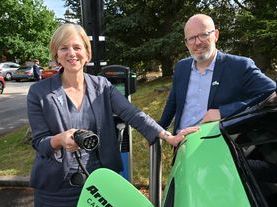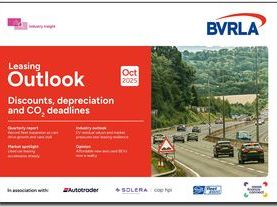The Government needs to supercharge its electric vehicle strategy if it is to have any chance of meeting its new ‘net zero’ emissions by 2050 pledge.
The Government needs to supercharge its electric vehicle strategy if it is to have any chance of meeting its new ‘net zero’ emissions by 2050 pledge.
New analysis from the BVRLA, which represents fleets that own or operate nearly five million cars and vans, shows that issues with taxation, charge point infrastructure and vehicle supply are putting the brakes on UK electric vehicle registrations.
Road transport is responsible for 26% of the UK’s greenhouses gas emissions. To reduce this impact, the Government published a ‘Road to Zero1’ strategy in July 2018, pledging to make almost every car and van zero emission by 2050. The BVRLA analysis uses a scorecard system to provide a comprehensive analysis of the Government’s progress towards its Road to Zero targets. In addition to highlighting issues around electric vehicle supply, it shows that the Government is failing in the following key areas:
- Tax policy – persuading large fleet buyers to go electric is one of the fastest ways to boost the number of EVs on the road. A lack of clarity about what taxes will be levied on the buyers and users of EVs in future years means they are holding back.
- Charge point access – there are still too many rapid charge point ‘blackspots’ and the ability to roam between different charging networks remains a challenge.
- Leading by example – the Government set a target to make 25% of its car fleet ultra-low emission vehicles (ULEVs) by 2022, but recent data indicates that only 2% are ULEVs, placing the Government way behind on its own plans.
The findings come in the association’s new Road to Zero Report Card, produced by sustainability consultancy Ricardo, which provides a traffic-light assessment of the Government’s progress towards meeting its zero-emission car and van targets.
“We are less than a year on from the launch of the Government’s Road to Zero strategy and our own Plug-in Pledge2,” said BVRLA Chief Executive, Gerry Keaney.
“Fleets across the UK have committed to this transition and are leading the zero-emission vehicle surge. Our research has found that they are desperate for clarity on future taxation and incentives, want better access to public charging and are frustrated at lead-times of over 12 months for the most popular EVs.”
The BVRLA’s Road to Zero Report Card provides a detailed analysis of key elements of the Government’s EV strategy and consolidates them into five categories – policy measures, tax benefits, new vehicles, charge points and user sentiment – giving each a traffic-light assessment3 based on a range of sub-criteria.
The overall strategy gets an ‘Amber – Brakes on’ rating, meaning that it is slightly behind schedule and that the market is seeing a mixed response to the government’s policy measures. This reflects the mixed picture that comes through in the report’s more detailed sub-scoring. Although there are green lights for some of the sub-criteria - showing that the UK is a ‘front-runner’ compared to other countries - these are outnumbered by the red warnings in vital areas, as summarised above.
To support its assessments, the BVRLA makes some key recommendations that it believes will get the UK’s electric vehicle strategy back on track. These include:
- Providing a five-year roadmap for motoring taxes and EV incentives
- Setting a national quota for EV registrations that ramps up between now and 2030
- Mandating universal methods of access and payment for public charge points
“Fleets are already spending billions of pounds on electric vehicles and can drive an even faster transition to zero emission motoring with more government support,” added Keaney.
“Growing concerns around urban air quality and climate change mean that the Government is already updating its targets with more ambitious ones. We are ready to work with policymakers and the automotive supply chain in meeting today’s and tomorrow’s challenges.”
-ENDS-
Notes to editors:
1 The Government’s Road to Zero strategy can be downloaded here.
2 As part of its 2018 Plug-in-Pledge, the BVRLA said that:
- By 2025, the UK rental, car club and leasing sector will increase its annual purchase of new plug-in vehicles from 17,000 to 300,000 per year.
- As a result, BVRLA members’ total plug-in fleet will rise during this period, from 50,000 vehicles in 2018 to 720,000 in 2025.
3Traffic light assessment: A ‘red light’ means that progress is significantly behind schedule or the market is not responding well to government policy. An ‘amber light’ means that progress is slightly behind schedule or that the market is seeing a varied response to policy measures. A ‘green light’ means progress is in-line with or exceeding targets and that the market is responding well.
You can access BVRLA images at www.flickr.com/photos/bvrla/albums



